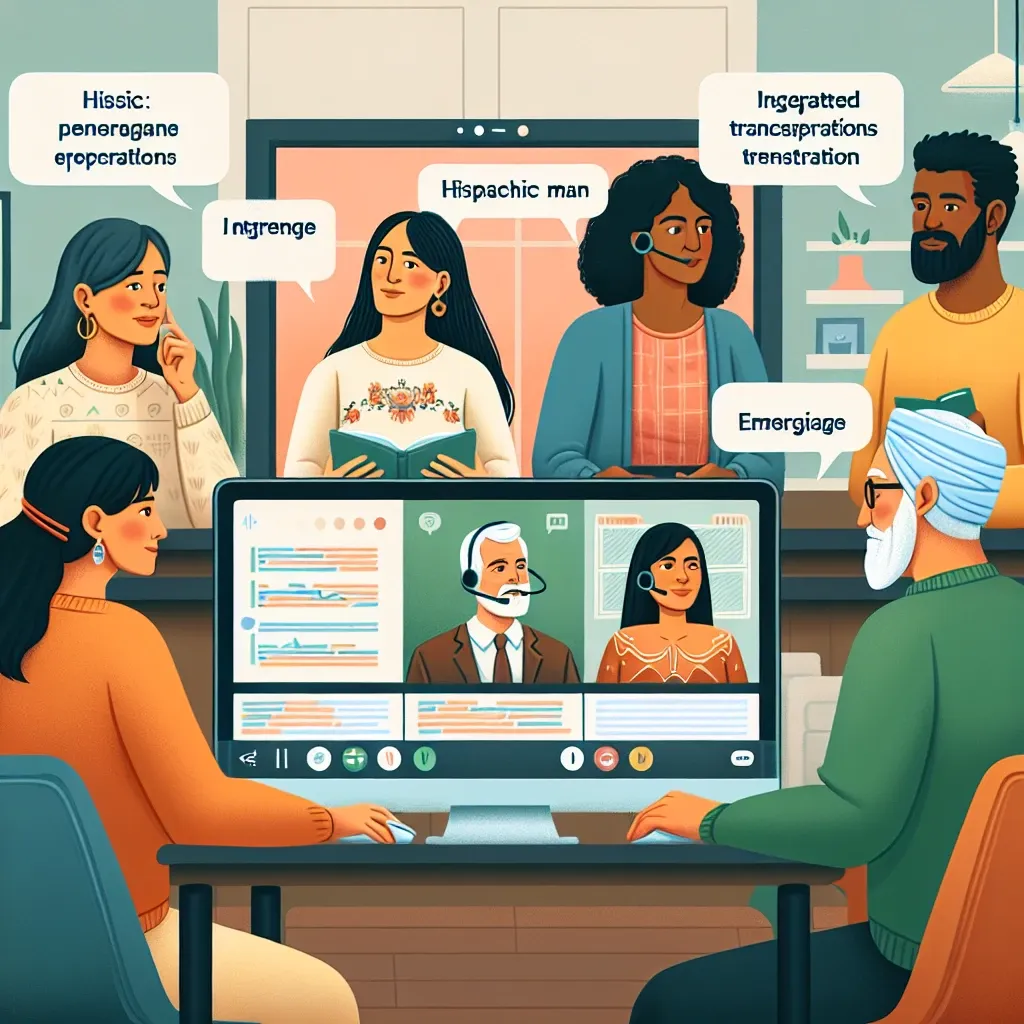Introduction
In an increasingly globalized world, effective communication across languages has become a critical necessity for businesses and organizations. Recognizing this need, Zoom has taken a significant step forward with its recent announcement of integrated transcription for Spanish-language meetings. This feature not only enhances collaboration but also fosters inclusivity among Spanish-speaking participants. In this article, we will delve into the details of this new feature, its historical context, and its potential impact on the future of communication.
Understanding Integrated Transcription
Integrated transcription refers to the automatic conversion of spoken language into written text during a meeting. Zoom’s integrated transcription service for Spanish-language meetings allows users to receive real-time transcripts, making it easier to follow discussions, capture important points, and revisit content later. This feature is particularly advantageous in multinational settings where teams may consist of members from diverse linguistic backgrounds.
The Historical Context of Zoom’s Development
Since its inception, Zoom has been at the forefront of video conferencing technology. The platform was launched in 2013 by Eric Yuan, who aimed to create a seamless virtual communication experience. Over the years, Zoom has expanded its offerings to cater to a more diverse user base, introducing features such as virtual backgrounds, breakout rooms, and now, integrated transcription. The demand for multilingual support has grown substantially, particularly during the COVID-19 pandemic, when remote work and virtual meetings surged. As businesses adapted to this new landscape, the need for effective tools to bridge language barriers became evident.
Benefits of Spanish-Language Transcription
The introduction of integrated transcription for Spanish-language meetings brings numerous benefits:
- Enhanced Accessibility: With real-time transcripts available, Spanish-speaking participants can engage more fully in discussions, ensuring that language barriers do not hinder collaboration.
- Improved Clarity: Transcription provides a written record of conversations, which can aid in understanding complex topics and facilitate follow-up discussions.
- Time Efficiency: Participants no longer need to take extensive notes during meetings. Instead, they can focus on the discussion at hand while referring to the transcript later as needed.
- Archiving and Reference: Recorded transcripts can serve as valuable resources for future projects, enabling teams to revisit critical information and decisions made during meetings.
How Does It Work?
The integrated transcription feature operates seamlessly within the Zoom platform. Here’s a step-by-step guide on how users can enable and utilize this feature:
Step 1: Access Zoom Settings
Log into your Zoom account and navigate to the Settings menu. Here, you will find various options related to meetings, video, and audio.
Step 2: Enable Transcription
Locate the transcription settings and enable the feature for Spanish-language meetings. Users may need to toggle this option on to activate it for their upcoming meetings.
Step 3: Start Your Meeting
Once transcription is enabled, start your meeting as usual. Participants who speak Spanish will benefit from the real-time transcription during the discussion.
Step 4: Access the Transcript
After the meeting, the transcription will be available for download or viewing within the meeting summary. This allows participants to refer back to important points discussed during the session.
Potential Challenges
While the integration of transcription services is a positive advancement, there are potential challenges to consider:
- Accuracy: The effectiveness of automated transcription can vary based on the clarity of speech and the presence of accents or dialects. Ensuring high-quality audio and clear articulation can improve results.
- Privacy Concerns: Users may have reservations about their conversations being transcribed, raising questions regarding data privacy and security. It is essential for Zoom to address these concerns transparently.
The Future of Communication Technology
As we move forward, the integration of features like Spanish-language transcription represents just one aspect of a broader trend toward more inclusive communication technologies. Businesses are recognizing the importance of accommodating diverse linguistic backgrounds, and platforms that prioritize these needs are likely to see increased adoption.
Expert Insights
Industry experts have emphasized the significance of advancements in transcription technology. According to Dr. Maria Gonzalez, a linguistics professor, “The ability to transcribe meetings in multiple languages will revolutionize how organizations interact on a global scale. It not only enhances productivity but also fosters a sense of belonging among team members.”
Conclusion
Zoom’s integrated transcription for Spanish-language meetings is a groundbreaking feature that promises to reshape how organizations communicate across language barriers. By enhancing accessibility, improving clarity, and offering time efficiency, this tool positions Zoom as a leader in inclusive communication technology. As more businesses adopt these features, we can expect to see a shift toward more collaborative environments where every participant feels heard and valued.
As we continue to embrace technology’s role in shaping our communication landscape, it is crucial to acknowledge the importance of inclusivity and accessibility. Zoom’s commitment to providing integrated transcription services sets a precedent for other platforms to follow, ultimately paving the way for a more connected and understanding global community.

Leave a Reply